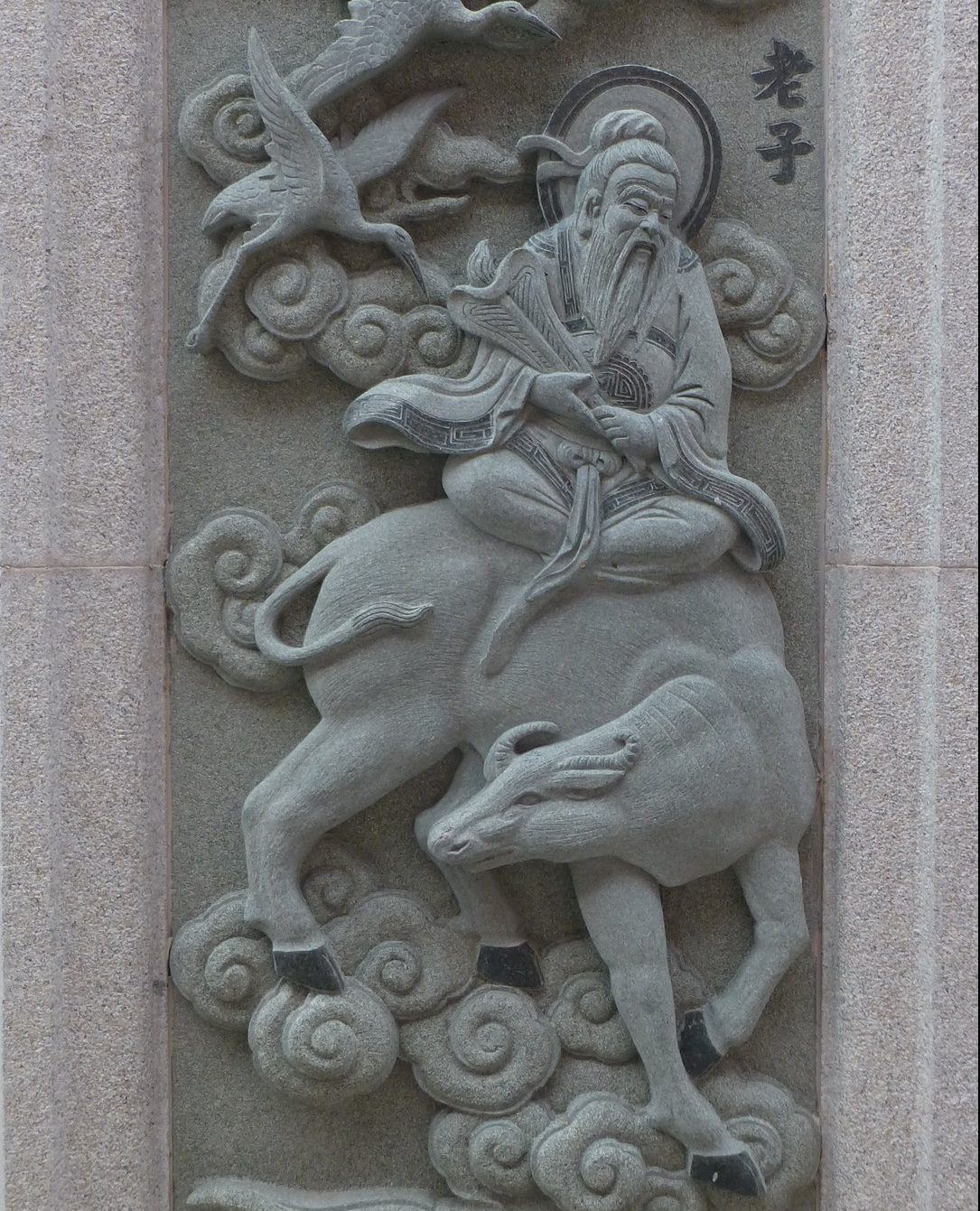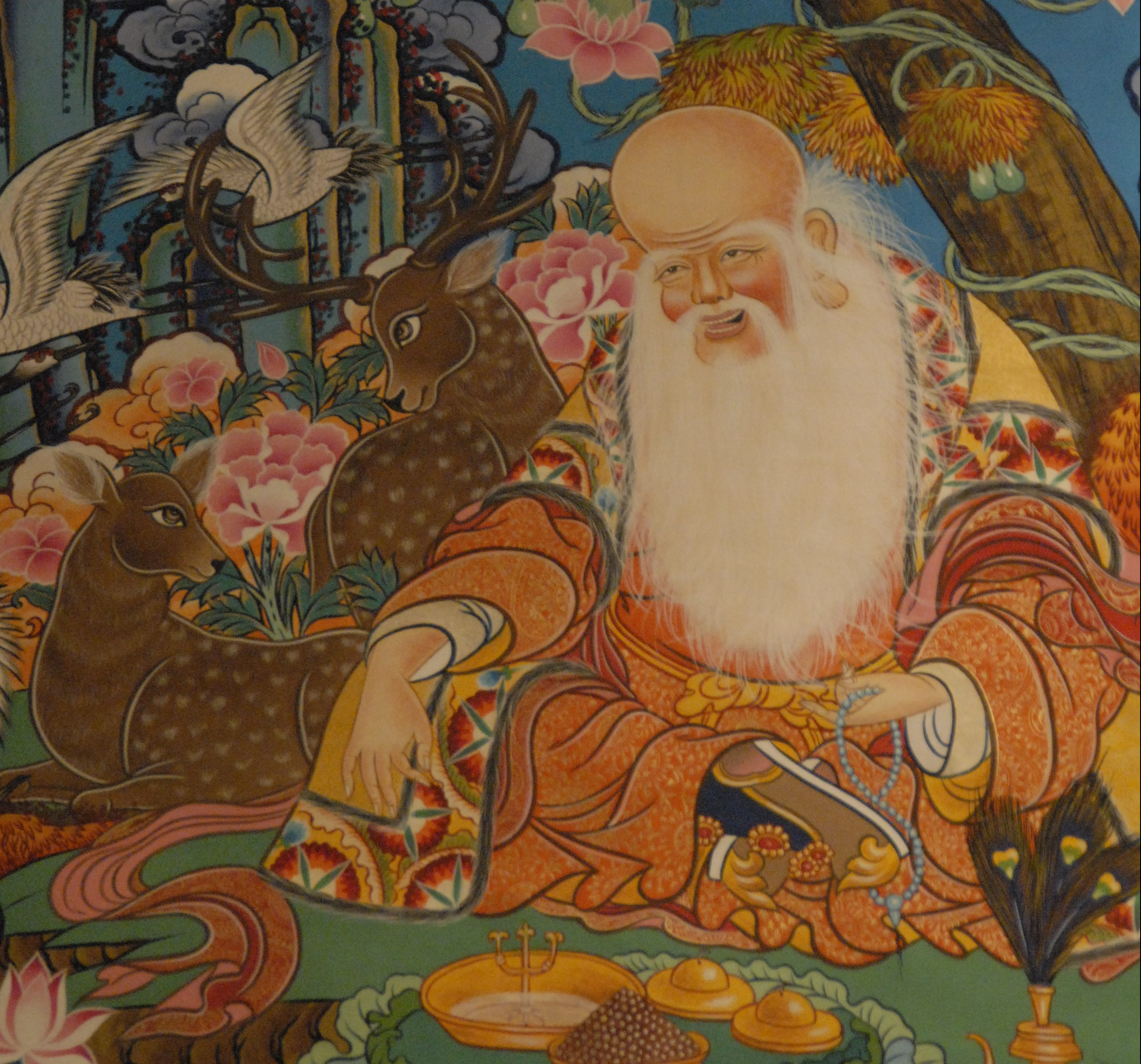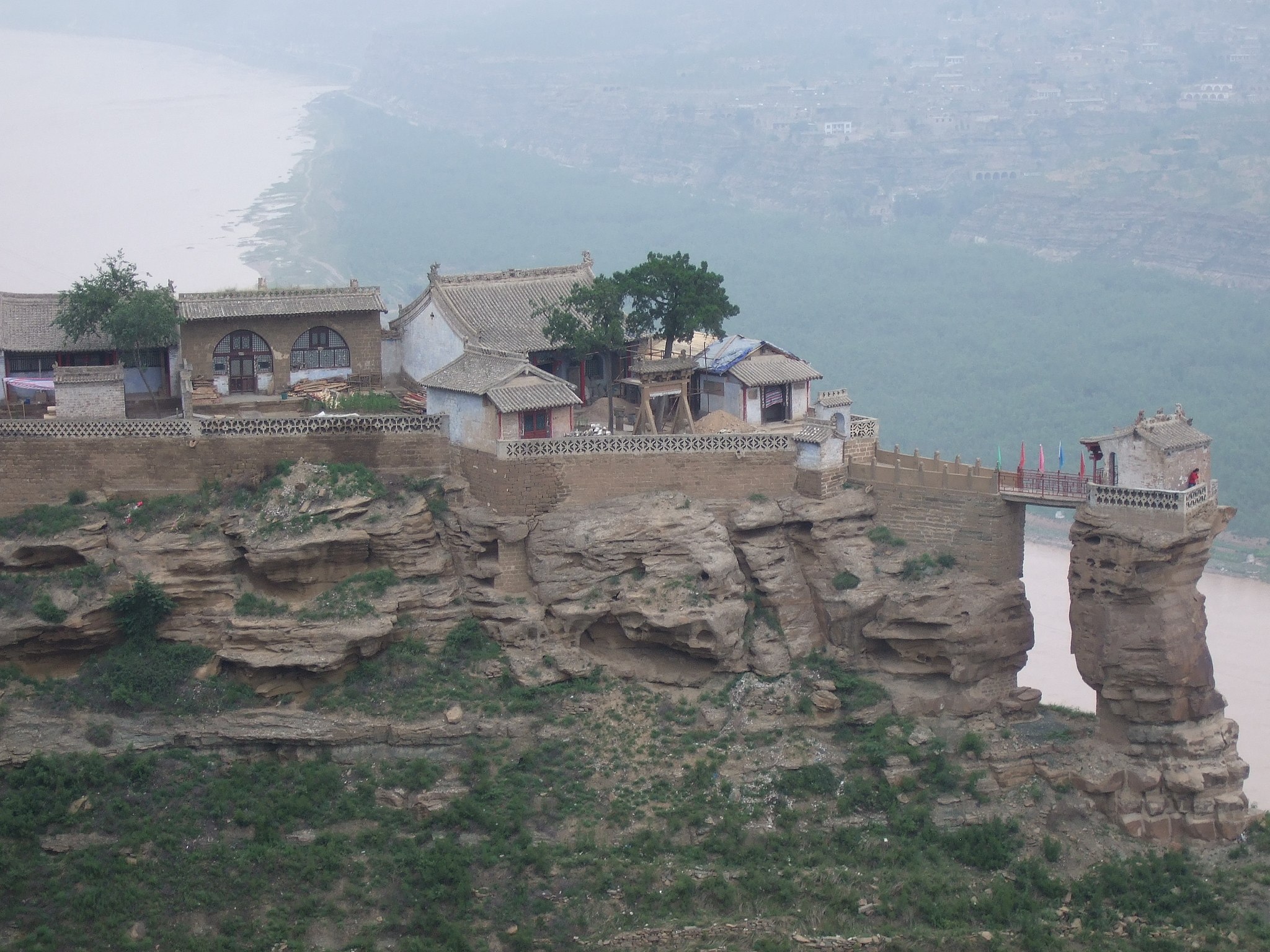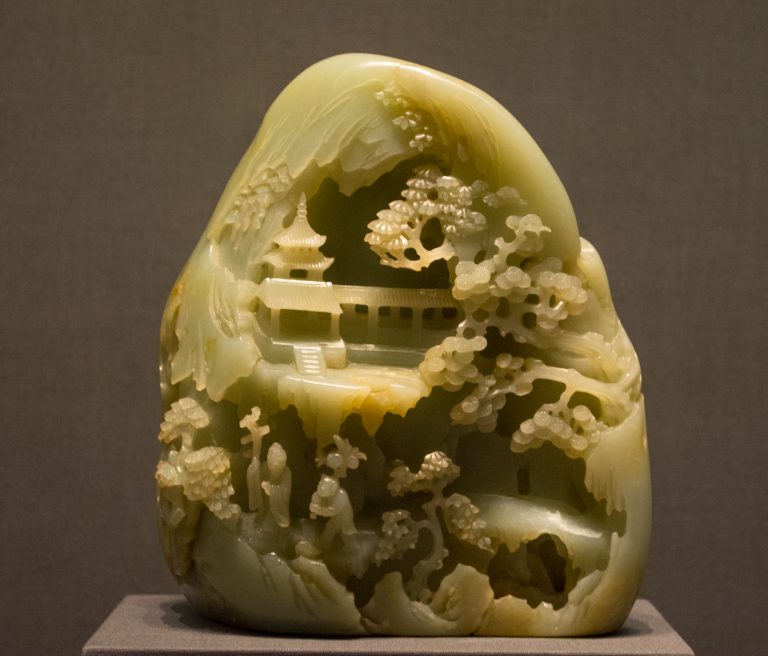Daoism is one of the main religions of China. Its three founders include the Yellow Emperor, who is said to have formulated the Daoist precepts, or behavioral rules; Lao Zi, who wrote the Dao De Jing, which Daoists regard as the holy scripture; and Zhang Daoiling, who composed the Xiang’er commentary to the Dao De Jing and founded the Tian Shi Dao (Way of the Celestial Masters) movement.
The three traditional religions of China; Confucianism, Buddhism, and Daoism, take different approaches. While they all aim for enlightenment, esch has a different way to achieve it. This makes spiritual cultivation more widely accessible. In ancient China, one would say, “Buddhists cultivate the mind, Daoists cultivate the body, and the Confucianists govern the world.” Confucianism could be practiced among everyday people, while Daoists and Buddhists would leave the secular world to practice.
Daoiam emphasizes following the course of nature rather than going against it. It is an organized religion with followers and scriptures, doctrines and religious ceremonies. It requires its believers to abide by Daoist precepts, and maintain high moral standards.
Today, many people in China regard Daoist beliefs as superstition. Due to the Communist Party’s promotion of atheism and persecution of religions, the Chinese people have largely lost touch with their heritage and traditional beliefs. Chinese society has become a culture of struggle, materialism, and mistrust. The spiritual pillar of moral ethics taught in Daoism seems to be lost on much of this society.
Historical impact
Yet Daoism has had a profound impact on the Chinese people throughout the ages. Its scriptures discuss everything from the mysteries of the universe to fundamental life lessons about physical and mental health, spiritual practice, governance, and natural law. The Dao school teaches one to cultivate compassion, frugality, and endurance; qualities Lao Zi emphasized as the “three treasures.”

Success
You are now signed up for our newsletter
Success
Check your email to complete sign up
Daoism teaches one to treat everyone as family, be humble, and consider others before oneself. Good is rewarded, while evil brings retribution. As Laozi put it, “Heaven’s Way is not partial in love, but always sides with the good man.”
In adhering to the concept of “the unity of man and nature,” Daoists believe in working with, rather than against, nature. In all his activities, man must consider their impact on the environment; otherwise, man will be punished by nature.
Since the Chinese Communist Party (CCP) took power in 1949, it has exploited and depleted natural resources in a destructive and predatory manner, threatening the very survival of the Chinese people. Air pollution, water scarcity and pollution, water and soil erosion caused by logging, and desertification are commonly seen results from this abuse.
According to Daoist thought, descendants have to bear responsibility, and suffer, for their ancestors’ wrongdoing. Thus, these disastrous environmental situations can be considered retribution.
The CCP controls and destroys Daoism
After the establishment of the CCP in 1921, it quickly gained power and began to eliminate Buddhism, Daoism, and Christianity with violent suppression in 1949. The severe persecution of Daoism continues to this day. The CCP has full control and supervision over all levels of the Daoist Associations and Religious Affairs Bureaus, from top to bottom.
This has enabled the CCP to destroy the religion from the inside. The Chinese Daoist Association (CDA) was established in 1957 with the clear understanding that it was “under the leadership of the people’s government” (an atheist entity).
Religious figures and activities banned
In 2011, local authorities in Luoyang, Henan Province held a consecration ceremony for a Laozi statue on Laojun Mountain. It is a huge bronze statue, measuring 125 feet in height. It was ranked a first rate tourist attraction, and recognized in February 2014 by Guinness World Records as “the world’s tallest bronze statue of Lao Zi.”
Recently, however, the same authorities claimed the statue was not approved, and ordered it to be covered and hidden from view.
When officials from the United Front Work Department of Luanchuan County, Henan Province visited Laojun Mountain Laozi Culture Garden in early October 2018, they discovered incense sticks in the incense burner. The official in charge immediately prohibited the burning of incense and had all the doors of the Cultural Garden locked, including the Gate to Oneness at Laojun Mountain Laozi Culture Garden. A banner reading, “Rectification Zone, Tourists Prohibited” was hung outside of the Garden.

Since the CCP implemented “Regulations on Religious Affairs” in 2018, the regime has tightened its control over religions. Daoist religious activities are banned and its culture being politicalized. In October 2018, another statue of Laozi in Xingyang, Henan Province was demolished by the authorities, who claimed it was an illegal construction.
The local County Religious Bureau forbade religious activities at Jade Palace Temple, a Daoist temple in Lanling County, Shandong Province, due to the absence of a registered certificate for religious activities. The 70-year-old abbot was threatened with jail and the demolition of the temple if he opened it.
There are nine Daoist temples on a mountain in Tang County, Baoding City, Hebei Province. Temple fairs were traditionally held every February at the temples, and Daoists were invited to preach Daoist culture. The local government has now canceled temple fairs, due to lack of permits. The road has been blocked to prevent pilgrims from visiting the temples.
Elderly abbess harassed and abused
Although she possessed the required registration certificate for religious activities, the abbess of a Daoist temple in Yanshi City, Henan Province, was mistreated for trying to stop her temple from being demolished.
Shortly after the implementation of “Regulations on the Administration of Religious Affairs” in February 2018, government officials repeatedly ordered the abbess to demolish the temple. She tried twice to delay the demolition. Once she placed a knife on her neck, threatening suicide to stop the demolition.
When she went to petition for the preservation of the temple, the abbess was sent back and threatened with imprisonment if she tried to appeal again. In November, 2019, local government officials brought their thugs to the temple. They covered the 72-year-old abbess’s head with a cloth and dragged her down the mountain. Bystanders were afraid for her life and pleaded with government officials to stop.
Even though the elderly woman screamed she was going to suffocate, they kept dragging her until she fainted. One eyewitness said, “There were traces of blood on her back.” When the abbess’ relatives rushed to the temple after hearing the news, they were stopped by the government officials halfway down the mountain.
The abbess was taken to the hospital, and the temple was demolished while her two disciples were held at the police station.
Daoist temples destroyed or converted into Communist academies
A building named “Institute of Traditional Culture Association” was built next to a Daoist temple by the Lanling County Government, Shandong Province in 2017. The authorities combined the building and the temple into a college, with classes focusing on the core values of socialism, science, laws and regulations. The temple disappeared.
Bixia Yuanjun is a famous Daoist goddess. The Bixia Yuanjun Temple in Xintai City, Shandong Province, was converted into a cultural hall with the propaganda placard, “Learn to propagate the 19th National Congress of the Party. Do not forget your initial wish to follow the party.”

In Fuzhou City, Fujian Province, Tianyiyuan Temple, an important place for religious activities in the local area, was demolished by the local government under the pretense of land acquisition. Pangu is a key figure in Chinese creation mythology. He is said to have separated Heaven and Earth and turned himself into geographical features like rivers and mountains. The Pangu Emperor’s Temple was likewise destroyed, for the sake of road construction.
One Daoist complained, “[the CCP] wants to supervise everything, even the promotion of our religion. There’s no freedom of belief. Last year, it implemented religious reforms and our certificates were all cancelled. We can’t afford to apply for all those permits. But if we don’t apply them, we are not allowed to wear Daoist garments (Daopao).”
The rise and fall of Daoism
Daoism prospered in the Tang Dynasty and reached its peak in the Song Dynasty. With the Emperors of the time respecting religion, many temples were built in those days, and people understood the value of following righteous principles.
Nowadays, so-called “monks” pursue profit and deceive others under the name of Daoism. Local governments and tourist bureaus intervene and spoil Daoist activities and culture, tarnishing the image of Daoism. The Daoist Association, charged with maintaining the true Daoist religion, is composed entirely of Communist Party members.
The fact that atheist individuals manage and lead religious affairs is probably the biggest worry for all religions in communist China. The CCP manipulates doctrines, intervenes with the spread of religions, and forces religious followers to undergo “ideological reform” or “re-education” in order to transform their thoughts. Indoctrinating them with atheistic principles, they force believers to abandon or violate their core beliefs.













